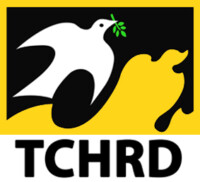2019 marks the 19th anniversary of International Mother Language Day observed annually on 21 February all over the world to highlight the importance of linguistic and cultural diversity for sustainable societies. First proclaimed by the UNESCO in 1999, the date represents the killing of students protesting for their mother tongue to be recognised as one of the national languages in Bangladesh.
The UN estimates that majority of the world’s estimated 7000 languages are spoken by a small number of populations while a few of them are used by a large majority of the world. Disadvantaged and marginalised communities such as indigenous peoples or minorities speak an overwhelming majority of these languages. About 90 percent of the languages we speak today will become extinct within 100 years.
One language at risk of extinction is Tibetan, the language spoken by more than 8 million people living on the Tibetan Plateau and in the Himalayas. The Tibetan language is revered as one of the four oldest and greatest in volume and most original literatures of Asia, along with Sanskrit, Chinese, and Japanese literatures. Tibetan dates back to the 7th century AD when the Tibetan script was created from Sanskrit. Later studies also revealed that the Tibetan written language used today evolved on the basis of reforming the Maer script that originated from the ancient Kingdom of Shang Shung, in Tibet’s Ngari region, and was found on many rock paintings dating from more than 1000 B.C.E.
Since the invasion of Tibet in 1949, the People’s Republic of China (PRC) has implemented numerous policies to guarantee that the Tibetan language will continue to be spoken, written, and developed. But these policies were often not put into practice. However, since 1990s, the PRC has adopted a more assimilationist approach in managing and resolving the issues related to Tibetans and other so-called minority nationalities that has had disempowering effect on Tibetan people’s capacity to use and develop their mother tongue.
To observe this year’s International Mother Language Day, the Tibetan Centre for Human Rights and Democracy (TCHRD) has translated in Tibetan ‘Language Rights of Linguistic Minorities: A Practical Guide for Implementation’ that was first published in March 2017 by the UN Special Rapporteur on minority issues. This guide is a follow-up to a 2013 report submitted by the special rapporteur to the Human Rights Council in which the special rapporteur warned that “globally, many minority languages are under threat of significant decline or disappearance due to such factors as the dominance of national and international languages, processes of assimilation, and a decline in the number of minority-language users.” This guide is a valuable resource in understanding the full scope of linguistic rights of linguistic minorities for their practical implementation and a government’s obligations to use or respect the language preferences of linguistic minorities.
TCHRD hopes that this guide will prove useful to Tibetan-speaking populations living inside Tibet and in exile to protect and promote their mother tongue, as it provides valuable information not just on clarifying the various rights of linguistic minorities and a government’s obligations to fulfill these rights but also on best practices and recommendations from all over the world that Tibetans living in diaspora can help to implement in their adopted communities. For instance, Australia and Hungary, which have widely dispersed or much smaller minority languages, have one dedicated national, multicultural and multilingual public television or radio channel which broadcasts to the whole country (SBS in Australia, MR4 in Hungary) on air and online. Likewise, in Canada and Finland, where students who speak a minority language (French or Swedish) are dispersed, public transportation brings students from surrounding areas to a public school that teaches in their language. In the United States, schools that use minority languages to communicate with parents have been shown to engage with them better, increase their involvement and improve their understanding of their children’s education.
TCHRD calls on the Chinese government to cease implementing its assimilationist policy in the garb of ‘ethnic minority policy’ as it is causing irreparable damage to the development of Tibetan language, culture and identity. The Chinese government must implement a culturally relevant bilingual education model rooted in Tibetan language and discontinue the current model of giving primacy to the so-called “national common language’ of Mandarin Chinese. The PRC can never achieve unity or equality of nationalities without also ensuring the equality of languages. As Khenpo Tsultrim Lodroe, a prominent Tibetan Buddhist scholar from Larung Gar Buddhist Academy, has said, “Language is the fundamental lifeline of a culture. It is the reservoir of identity and the most precious gem of a nationality – of a people.”
The full Tibetan translation of ‘Language Rights of Linguistic Minorities: A Practical Guide for Implementation’ can be downloaded here.
If you cannot download due to technical problems, email our staff Ms Tenzin Dawa ([email protected]) or Mr Pema Gyal ([email protected]) for a copy.

